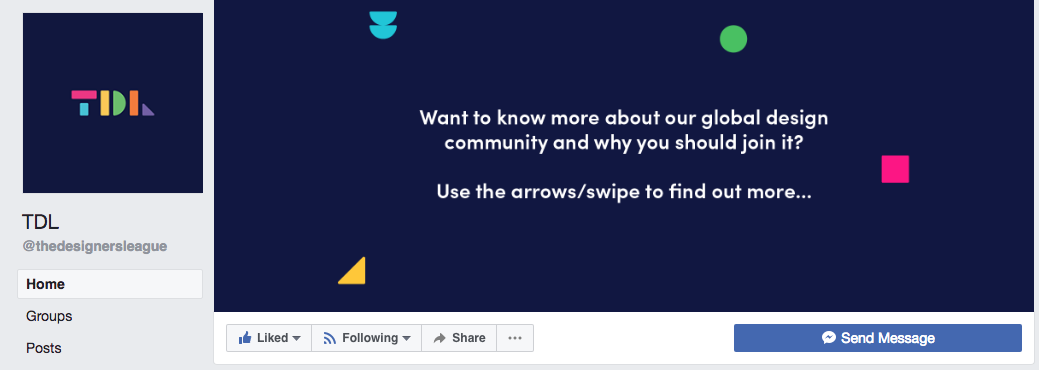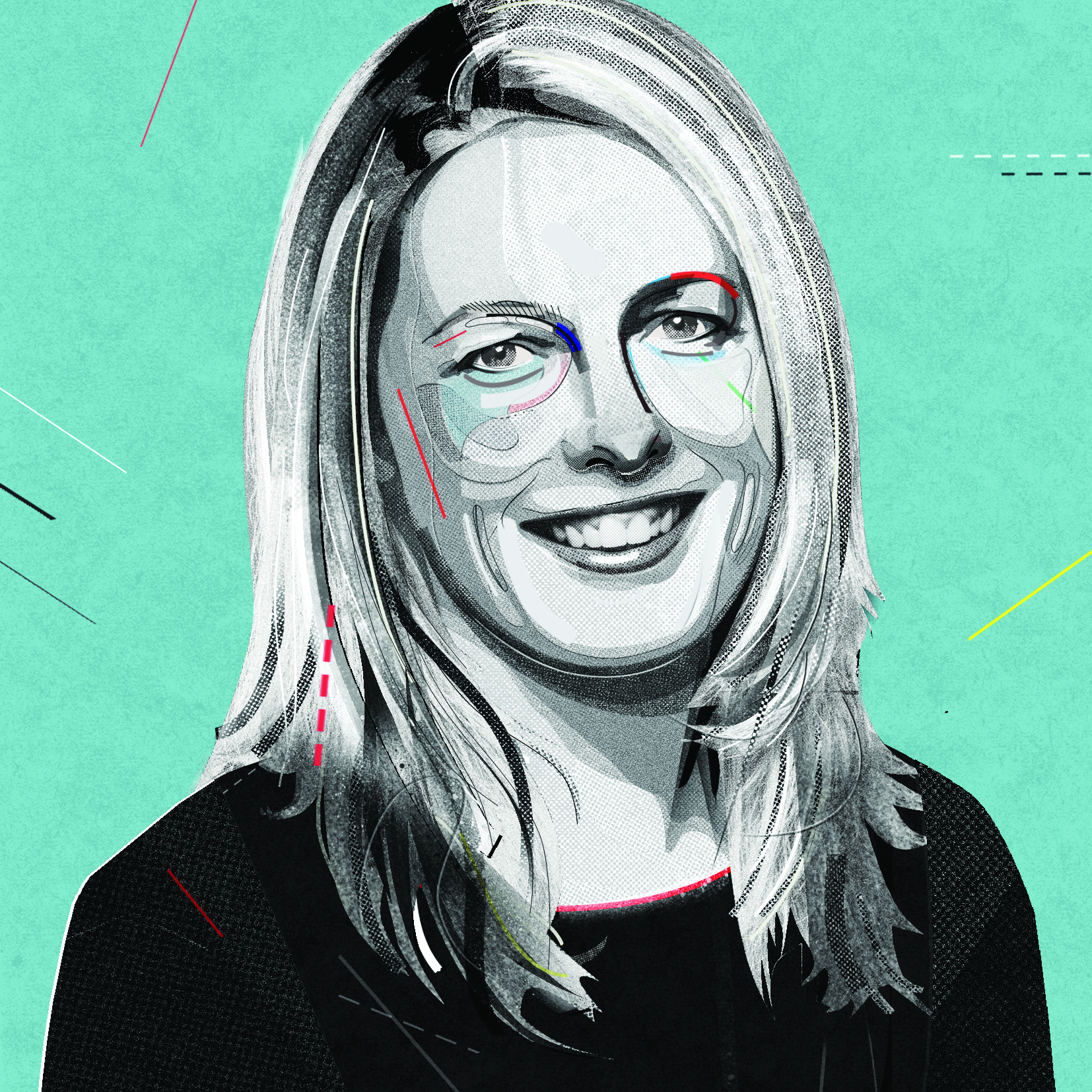How to upgrade yourself
Discover how to assemble the ultimate toolkit of skills – whatever you want to do.
Anyone can fall into a skills gap. Sure, it’s an issue often faced by new graduates or older workers facing redundancy – but even if you’ve dedicated a decade to following your design passion, the technology, techniques and thinking driving a field can evolve dramatically (Flash, anyone?). And that’s before we throw in the seismic shift currently being delivered by AI and machine learning.
Across the creative industries, changing skill requirements are already creating major pinch points – both in traditional areas, such as art direction, and newer areas like motion capture. In a 2017 report by the Creative Industries Federation, nearly 60 per cent of those surveyed said they were facing skills shortages when employing new people.
So how can you make sure you’re investing in the right skills to achieve your creative goals? Whether you’ve fallen into a skills gap in your current position, or you’re actively looking to propel yourself to the next level in your chosen area, we can help.
Here, leading designers and educators explain how to identify your personal skills gap, where the corresponding opportunities are in the industry, and how to bridge the gap. Read on to find out how to assemble the ultimate toolkit of skills.
Know your why
A skills gap happens when there’s a difference between the skills required by an employer, project or field generally, and the skills offered by the workforce. Conducting a skills gap analysis enables you to identify what you need to meet your personal goals – and the good news is they’re easy to do.
However, before starting you need to “know your why”, points out Benji Holroyd, founder and creative director of SB Studio. “At a time when ‘purpose’ is such a buzzword, finding your purpose early on is invaluable,” he says.
At a time when ‘purpose’ is such a buzzword, finding your purpose early on is invaluable
Benji Holroyd, SB Studio
Ragged Edge co-founder Max Ottignon agrees. He says that it’s important to follow your passion: "We talk a lot about T-shaped people – those with a broad range of knowledge and skills, and an in-depth specialism. The latter needs to be something you’re really passionate about,” he explains.
Get the Creative Bloq Newsletter
Daily design news, reviews, how-tos and more, as picked by the editors.
It’s good advice. Passion is what sets you aside from everyone else: it keeps you motivated, makes your work better, and attracts employers and clients. In a rapidly changing industry – where software skills, particularly, can quickly become outdated – following your passion is a savvy way to navigate your creative path, helping you choose which skills to invest in at which time.
Do a skills gap analysis
Whatever your end goal, once you know what it is, you can plot your course with a skills gap analysis. The first step is to identify the skills needed in the position or project you’re looking at, and list them in a spreadsheet. Aside from reading job adverts and design blogs, the best way to determine what you need is to speak to people who are already doing what you want to do, whether it’s your boss, somebody at another studio, or a designer you follow on social media.
There are also hundreds of online design communities you can ask to join – not least the excellent The Designers League Facebook group. The rules are simple: don’t be rude, and don’t harass people when asking for career advice.

Once you start listing the skills needed, it can help to categorise them into different sections, such as responsibilities, tasks and knowledge required. It’s wise, too, to consider skills that might be necessary in the future.
Step two: next to each skill, create a scale of measurement to show how important each one is (low, moderate, high) and mark the skill level required (a scale of one to five, for instance, could range from inexperienced to expert).
The next step is to measure your current skills against this scale, assigning the same numerical rating to your actual skill level. For example, your table might read: Skill: leadership. Importance: high. Skill level required: 5. Current level: 3. Be honest. What are you good at, and what are you not so good at?
The final step is to analyse the data. Using the numerical rating system, you can quickly see where your skills gaps are – and because you know which requirements are most important, you know where to start your development.
There’s another way, too. “Take time to reflect on your portfolio and ask others to give you constructive feedback on your work,” advises Robyn Dooley. She’s the founder of OH, an alternative education company designed to connect creative talent with industry, and bridge the gap between education and employment. “Don’t let the feedback dictate your entire approach to design, but do let it support you in your endeavour to improve your skills,” she continues.
What's needed in 2018
When it comes to deciding which skills to focus on first, it helps to know which skills are most needed – and least in demand – in the industry. At Ragged Edge, two of the most in-demand additional skills for designers are motion design and 3D. This isn’t new: we’ve been talking about these skills for a decade – and yet today they’re more valuable than ever for designers.
“Brands designed for screens need to be built with motion in mind. So designers who can bring some movement into their work are worth their weight in gold,” Ottignon explains. “The most obvious example would be bringing a logo to life with an animation. Even the simplest movement gives it so much more impact when you present it.”
A designer who has good conceptual skills, alongside the ability to bring these to life in 3D, will have a real point of difference
Max Ottignon, Ragged Edge
He says that After Effects tends to be the starting point here. “A number of designers at Ragged Edge have added this to their armoury,” he adds, “and it’s really helped them sell their ideas.”
The ability to apply your work across 3D objects or spaces is also invaluable – and Ottignon has great advice here. “In the rush to go digital, the physical world sometimes gets neglected. A designer who has good conceptual skills, alongside the ability to bring these to life in 3D, will have a real point of difference.”
Take Ragged Edge’s brand guidelines for Grey Goose vodka. “We incorporated a whole section on in-store activation,” he says. “That meant lots of 3D renders of retail environments and displays, all brought to life in Cinema 4D.”

“Increasingly, I find that the projects I get involved in require coding skills,” says graphic designer, author and RCA visiting lecturer Adrian Shaughnessy. “I’m a Neanderthal when it comes to code, so I rely on people with coding skills. I’m never happy bluffing or faking it. If you haven’t got the skills, it shows.”
“The demand for UX designers has gone up,” agrees Dooley. “If you’re looking to further develop your design skills, I’d suggest getting your head around the concept of it and the language of UX,” she continues.
Designers who have dabbled with HTML and CSS are also in demand, she adds. “You certainly don’t have to become an expert, but understanding what’s under the bonnet of front-end development will support your designs.”
However, Dooley says the real skills gap in the creative industry is soft skills. “The ask from designers now appears to be less focused on the technical skills of design, and more so on communication and ways of thinking. It sounds like a cliche, but it’s essential, and will be more so over the coming years.”
She continues: “Having the ability to communicate ideas confidently – and in a way that’s digestible for everyone in your team to understand and visualise – is a sought-after quality. There’s a skill within being able to articulate the creative process behind your ideas, the ‘why’ behind designs and how you got from A to B. We’re also increasingly speaking to studios who are asking for designers that have a background or interest in psychology,” she says.
What to avoid
Are there any skills to avoid learning? The top-level consensus is no. “Anything you can bring that’s a bit out of the ordinary is worth having,” says Ottignon. “You never know how you might be able to apply it with a bit of creative thinking.”
That said, software and new trends can quickly become obsolete. At Shillington, the curriculum is constantly updated to ensure courses don’t teach outdated software, skills or trends.
“In the past five years, we’ve scrapped a lot of print projects to concentrate on design thinking, UX and UI, as a plan to create designers that are better prepared to work in collaborative teams and have the problem-solving skills to adapt in a fast-changing environment,” says Anthony Wood, Shillington’s managing director.
“Being aware of digital trends and having a confident grasp of UI design will inevitably become increasingly important, as will competency of AR and VR,” he continues. “But it’s important to remember that a designer’s strongest and most important skill is research – both for the client and user – with a creative problem-solving ability to back it up.”
Bridge your skills gap
So what’s the best way to acquire the skills you’ve identified? Online learning platforms like Skillshare, Udemy and Lynda are packed with short, affordable courses on everything from creative to business skills. Brooke Young, digital marketing manager at Skillshare, says it’s less about learning one specific skill to make you a better designer, and more about continually improving your skills. “That’s why we give our members unlimited access to classes for a low monthly or annual price,” she explains. “It makes it easier and more affordable to take many classes over time.”
Don’t feel that you have to commit to completing a class in one sitting. “Watching 10 minutes of a class every day is a lot less intimidating and makes it easier to complete,” Young points out. With Skillshare’s mobile app, you can also download classes to your device and watch them offline – meaning you can learn from anywhere.
Being able to learn wherever you are doesn’t mean that learning shouldn’t be structured. Time perimeters are paramount, says Wood. While there’s a time and place for unstructured “play”, he says that if you want to truly master a new skill, treat it like a college assignment or client project. “Set strict timelines, identify a deadline and create incentives to stay on track,” he advises.
“Accountability is also key,” says Wood. “Create your own classroom. Don’t be afraid to connect with fellow designers – whether that’s in person or online – who want to upskill too. This is why we have special graduate partnerships with RookieUp, an on- demand mentorship platform, and Briefbox, a library of practice briefs and helpful resources, to keep challenging our students, even after graduation.”

Also, don’t be afraid to learn on the job – it’s probably how you acquired many of the skills you already have. “If there’s a brief that requires a skill you don’t have, can you take it on and learn at the same time? It will probably mean a few late nights and early mornings,” says Ottignon, “but it will be worth it.”
I’ve always found the best, easiest way to learn a new skill is to invent a project for yourself
Bonnie Siegler, Eight
And if you can’t learn on the job? Invent a project incorporating whatever it is you need to learn. “I’ve always found the best, easiest way to learn a new skill is to invent a project for yourself,” reflects Bonnie Siegler, founder of design studio Eight and a Half. “Then you have to solve all the problems that appear before you. For retention purposes, nothing beats figuring it out yourself.”
For Shaughnessy, learning from your peers is the most effective way to up-skill. His experience, both in working life and education, is that designers learn best from each other. “I don’t know many designers who use software manuals – instead they immerse themselves in the subject and then look for someone to help them,” he says. “Online tutorials can be helpful. But ultimately, peer learning is the best way forward.”
He encourages students to learn new skills as well as enhance existing ones. “But my emphasis is always on learning how to learn,” he explains. “Many skills will be redundant by the time students have perfected them. Acquiring skills is a lifetime exercise – so you’d better know how to be a constant learner.”
Lead image: Tishk Barzanji
This article originally appeared in Computer Arts issue 277; subscribe here.
Read more:

Thank you for reading 5 articles this month* Join now for unlimited access
Enjoy your first month for just £1 / $1 / €1
*Read 5 free articles per month without a subscription

Join now for unlimited access
Try first month for just £1 / $1 / €1

Julia is editor-in-chief, retail at Future Ltd, where she works in e-commerce across a number of consumer lifestyle brands. A former editor of design website Creative Bloq, she’s also worked on a variety of print titles, and was part of the team that launched consumer tech website TechRadar. She's been writing about art, design and technology for over 15 years.
